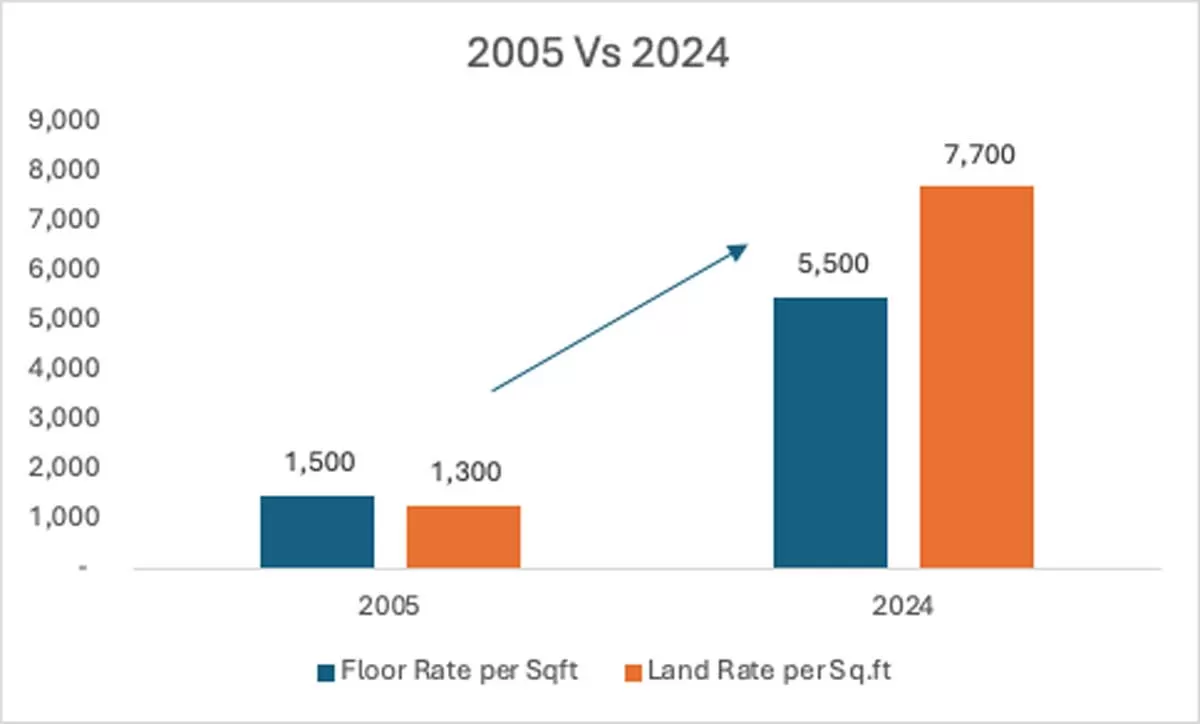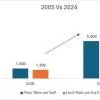The Economic Survey 2024-25, presented by Union Finance Minister Nirmala Sitharaman, indicates substantial improvement in India’s labour market, driven by strong post-pandemic recovery and formalisation of the workforce. Key findings include a significant drop in the unemployment rate from 6 per cent in 2017-18 to 3.2 per cent in 2023-24. Additionally, there has been notable growth in female labour force participation, which increased from 23.3 per cent in 2017-18 to 41.7 per cent in 2023-24.
Other highlights include:
- Over 30.51 crore unorganised workers registered on the eShram portal, supporting their access to social security benefits.
- The EPFO saw a rise in subscriptions, doubling from 61 lakh in FY19 to 131 lakh in FY24, reflecting the increasing formalisation of the job market.
- Nearly 61% of net payroll additions came from individuals under 29 years, showcasing youth-driven employment growth.
- The self-employed workforce increased from 52.2 per cent in 2017-18 to 58.4 per cent in 2023-24, reflecting growing entrepreneurial activity.
The survey advocates for a flexible labour regulatory environment to support business growth and employment creation. It also emphasises the importance of sectors like the digital economy and renewable energy, which hold vast potential for creating jobs, particularly for women. The government’s initiatives in skill development, such as PMKVY, ITI upgradation, and the PM Vishwakarma scheme, are vital to ensuring a skilled workforce ready for emerging global trends.
The Economic Survey stresses the need for a fair distribution of income between capital and labour, recognising the growing disparity between corporate profitability and wage growth. It also highlights the importance of ensuring that the growing digital and renewable energy sectors provide high-quality job opportunities, contributing to India’s economic development and the vision of Viksit Bharat.
Industry Speaks:
Shrinivas Rao, FRICS, CEO Vestian, stated, “The Economic Survey 2025 reaffirms the vision of Viksit Bharat 2047, recognizing that this goal cannot be achieved without the contribution of the real estate sector—the second-largest employment generator in the country. The survey highlights the sector’s strong performance in 2024, driven by economic stability and positive market sentiment. Vestian Research data reinforces this trend, with 2024 recording the highest-ever office absorption at 70.7 million sq. ft.
Sahil Agarwal, CEO, Nimbus Group said,”The Economic Survey underscores the crucial role of the real estate sector in economic growth and projects sustained demand for both housing and office spaces over the long term. Given its significant contribution to GDP and employment, real estate remains one of the key pillars of India's economic expansion.
The sector has witnessed renewed confidence following the implementation of RERA (Real Estate Regulatory Authority), which has instilled greater transparency and accountability. As a result, both end-users and investors are now more willing to invest in projects developed by RERA-compliant builders, leading to a healthier and more robust market. Over time, we expect transparency and governance in the sector to improve even further, making it even more attractive for investment.
The Economic Survey rightly predicts that housing demand in India will reach 93 million units by 2036, a figure that underscores the enormous growth potential of the sector. Beyond just real estate, this surge in demand will also benefit auxiliary industries, such as construction materials, home décor, finance, and technology, creating a ripple effect across the economy.
However, to fully capitalise on this demand and drive further growth, we urge the government to grant long-pending industry status to the real estate sector. This will allow developers to access easier financing, lower borrowing costs, and incentives, ultimately enabling the sector to meet housing demand more effectively and contribute even more significantly to India's economic progress.”
On GDP Growth, Vivek Lohia, Managing Director of Jupiter Wagons said, “With India’s GDP growth projected between 6.3 per cent and 6.8 per cent in FY26, this is a pivotal moment to reinforce our economic framework. Achieving this requires a multi-faceted approach—deepening investments in infrastructure, fostering a pro-innovation business environment, and accelerating workforce upskilling. The Union Government’s infrastructure push must be complemented by policies that enhance ease of doing business, increasing flexibility in the labour market and de-risk private sector participation in mega projects. Additionally, expanding opportunities in emerging sectors like green energy, digital economy, and advanced manufacturing will be critical to generating employment across skill levels. By embracing these priorities and ensuring seamless public-private collaboration, we come one step closer to becoming a globally competitive, future-ready economy.”


















